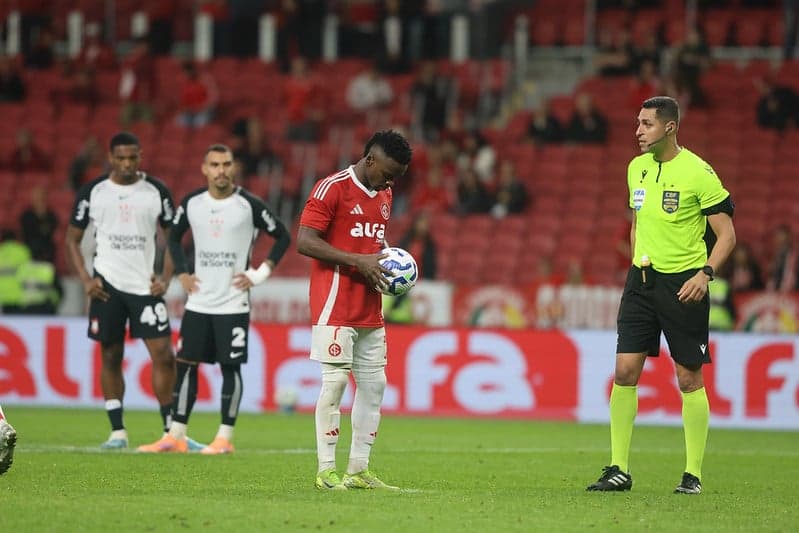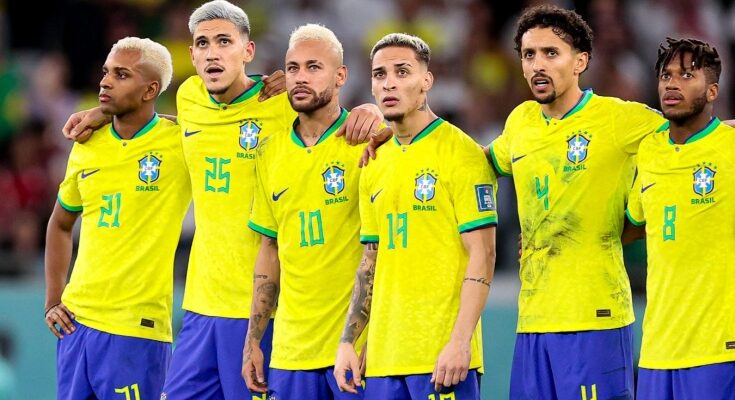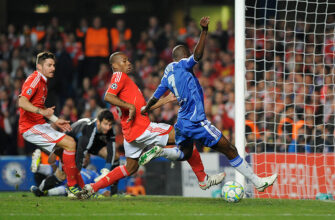The beautiful game, increasingly intertwined with the complexities of modern technology, recently saw another chapter of its ongoing drama unfold in Brazil. The Confederação Brasileira de Futebol (CBF), in a move towards greater transparency, released the much-anticipated audio recordings from the Video Assistant Referee (VAR) booth. The focus? A hotly contested 1-1 draw between Internacional and Corinthians in the Brasileirão, a match that sparked widespread debate over several pivotal decisions. This release pulls back the curtain, offering a rare glimpse into the subjective world of refereeing, where technology promises clarity but often delivers more questions than answers.
The Penalty That Shook the Pitch: A Matter of Perspective
At the heart of the controversy was a late-game penalty awarded to Internacional, which ultimately led to their equalizer. The incident involved Internacional`s midfielder Bruno Henrique and Corinthians` defender Cacá. On the field, referee Rodrigo Pereira de Lima saw no foul. However, the VAR booth, led by Gilberto Rodrigues Castro Junior, had other ideas. Initially, even the VAR official hesitated:
“There`s a pull on the back, very subtle,” Gilberto observed, cycling through camera angles. His first impression even leaned towards “no penalty.”
Ah, the subtle arts of football officiating! It seems a pull can be both subtle and impactful, depending on which pixel one chooses to scrutinize. After requesting a new angle, Gilberto`s interpretation shifted:
“Give me real speed, there`s a pull that stretches the shirt and impacts the action of the red player. The player tries for the ball, do you agree? […] Rodrigo, I suggest a review for a possible penalty, the player is pulled by the shirt from behind, causing impact.”
This internal monologue, now public, highlights the constant tightrope walk of VAR officials. The field referee, Rodrigo Pereira de Lima, despite his initial on-field judgment, eventually concurred after his own four-minute review at the monitor, confirming a “pull” that interfered with the play. It’s a compelling illustration of technology guiding (or perhaps overriding) human instinct, turning a “very subtle” tug into a match-altering infringement.

The Fine Lines of Offside: Precision vs. Perception
Beyond the contentious penalty, the match saw two goals disallowed by VAR, offering a glimpse into the more objective (though still debated) side of the technology. First, Corinthians had a goal by Hugo chalked off due to offside. The VAR analysis confirmed that Hugo`s shoulder was marginally ahead of the last Internacional defender. Even the field referee acknowledged the tight nature of the call, stating, “It`s very tight. There`s a Corinthians player in front of me who prevents me from being certain.” Such is the realm of millimetric decisions, where a player`s shoulder can carry more weight than a hundred arguments.
Later, Internacional also saw a goal disallowed. Óscar Romero`s finish was nullified after VAR determined that teammate Luis Otávio, though not directly touching the ball, was in an offside position and made a movement (a jump) that interfered with the goalkeeper Hugo Souza`s vision. The VAR official articulated:
“I understand that number 39 makes a movement. The ball passes close and he makes a movement. I understand that it causes impact, he is exactly in the goalkeeper`s line of sight.”
This incident underscores VAR`s role in judging “active participation” from an offside position, a rule that often confounds fans and players alike. It moves beyond simple lines on a screen to interpret the *effect* of a player`s presence, requiring a nuanced understanding of gameplay dynamics.
The Unseen Pressure: A Referee`s Burden
The release of these VAR audios, while intended to promote transparency, inadvertently shines a spotlight on the immense pressure placed upon football referees. On-field officials make split-second decisions in the heat of the moment, often with obstructed views. The VAR team, armed with multiple angles and replays, then steps in, often initiating lengthy reviews that pause the game and amplify tension. The “subtle pull” incident, where the VAR official himself changes his mind, perfectly illustrates the inherent subjectivity that even technology cannot fully eradicate.
One might wonder, does this level of scrutiny truly benefit the game? Or does it merely shift the blame, turning the once-unseen mistakes of the pitch into highly audible, dissected conversations? The constant pressure to get every call “right,” even by fractions of an inch or nanoseconds of movement, places an almost superhuman burden on those tasked with enforcing the rules.
VAR: A Double-Edged Sword for Brasileirão?
In the vibrant, passionate world of Brazilian football, where results are often decided by the slimmest margins, VAR has become a recurring character in the narrative, sometimes a hero, often a villain. While it has undoubtedly rectified clear and obvious errors, as evidenced by some offside calls, it has also introduced new layers of complexity and debate, particularly around subjective fouls like handballs and penalties. The CBF`s decision to release these audios is a step towards demystifying the process, but it also reveals the human element — with all its hesitations, changes of mind, and interpretations — that remains firmly embedded in the technological tapestry of VAR.
As the Brasileirão season progresses, one thing is certain: VAR will continue to be a talking point, a technological aid striving for perfection in an inherently imperfect game. And as long as humans are making the ultimate calls, even with digital assistance, the beautiful game will always retain its beautiful controversies.









